Promise Pegasus R6 & Mac Thunderbolt Review
by Anand Lal Shimpi on July 8, 2011 2:01 AM ESTThe Pegasus: Hardware
Promise offers two versions of the Pegasus: the R4 and R6. The names are easy enough to understand, they simply refer to the number of drive bays. Through Apple you can buy any of four configurations:
| Promise Pegasus Lineup | ||||||
| # of Bays | Drive Configuration | Default Capacity | Price | |||
| Promise Pegasus R4 4TB | 4 | 4 x 1TB RAID-5 | 2.7TB | $999 | ||
| Promise Pegasus R4 8TB | 4 | 4 x 2TB RAID-5 | 5.7TB | $1499 | ||
| Promise Pegasus R6 6TB | 6 | 6 x 1TB RAID-5 | 4.7TB | $1499 | ||
| Promise Pegasus R6 12TB | 6 | 6 x 2TB RAID-5 | 9.7TB | $1999 | ||
All of the configs ship with 3.5" 7200RPM hard drives and are configured as a single RAID-5 array by default, although Pegasus supports most of the common RAID formats (RAID 0/1/5/50/6/10).
The 12TB Pegasus R6 we received for review came with 6 x 2TB Hitachi Deskstar 7K3000 drives. These are four platter drives with 64MB buffers. I did try installing Seagate 3TB drives and SandForce SF-2281 SSDs in the system, both of which worked. I did run into some reliability issues with the Pegasus R6 configured with 4 x SF-2281 SSDs, however it's unclear whether they were caused by the drives themselves, the Pegasus or a combination of the two.
Internally Promise uses a PMC Sierra PM8011 8-port SAS-2 RAID controller. This is an 8-lane PCIe Gen 2 controller with eight SAS/SATA 6Gbps ports. On the R6 obviously only six of those ports are functional. The PM8011 has an embedded 600MHz MIPS processor and is paired with 512MB of DDR2-533.
The Pegasus chassis is made out of aluminum, similar to the unibody MacBook Pro and iMac but not quite identical. The color is a bit lighter with a more coarse grain. The metal construction combined with the six 3.5" drives gives the Pegasus R6 its 20.4 lbs weight (the R4 weighs in at around 15 lbs).
The front of the chassis is pretty clean. The glossy black strip on the left of the unit is home to the power button and the two Thunderbolt indicators. There are two Thunderbolt ports on the Pegasus, one connects to your Mac while the other connects to any other DisplayPort/Thunderbolt devices in the chain. Occupy a single port and one indicator lights up, occupy both and you get two:

The power button burns blue when everything is functional, orange during startup and red if there's a problem with the array. Powering down the Pegasus requires that you hold the power button for ~10 seconds until the button glows red then release in order to avoid any accidental shutdowns.
The R6 has six removable 3.5" drive bays that accept 2.5" drives as well. The screws Promise provides with the Pegasus are too large for SSDs so you'll have to supply your own if you want to replace the HDDs with SSDs down the road.
Ejecting and inserting the Pegasus' drives is incredibly smooth. There's a large square eject button on the front of each drive carrier - depress it and the handle pops out. Pull on the handle and the drives slide out perfectly. There's surprisingly little resistance to inserting the drives completely, the entire motion is just very fluid.
Each carrier has two LEDs - status and activity. Blue indicates proper operation while red indicates a problem.
The Pegasus' on-board RAID controller doesn't care about the order in which you install drives for a single array (e.g. you can swap carriers 2 & 5 and your array will still function, provided you do so while the Pegasus is powered down). Note that if you do remove more than one drives from an live RAID-5 array you'll lose all of your data, even if the array was idle when you pulled the drives. You can remove a single drive and be fine, although you'll have to resyncrhonize the array when you insert the missing drive. A full RAID-5 rebuild takes about 7 hours on the Pegasus R6. The array is still usable during its synchronization process.
Around back there are two Thunderbolt ports and a serial port, the latter presumably for firmware updates/direct access to the on-board controller (the port is currently undocumented).
There are two fans in the Pegasus R6: a large ~100mm fan to cool all of the drive bays and a small ~40mm fan to cool the integrated PSU. The Pegasus ships with a 250W 80Plus Bronze certified power supply. The PSU isn't intended to be user serviceable and can't be removed without disassembling the Pegasus.
The Pegasus is powered by a standard 3-pin AC power connector. Promise supplies a cable although any standard PC power cable will work.


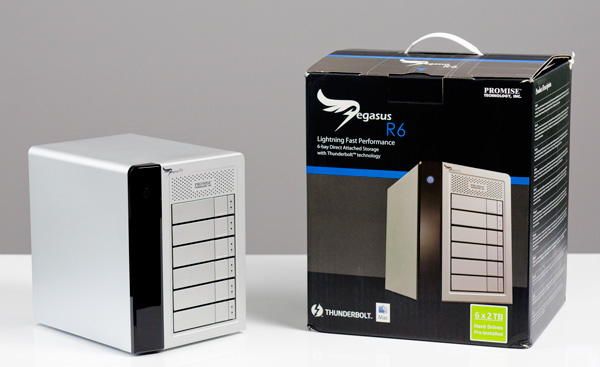
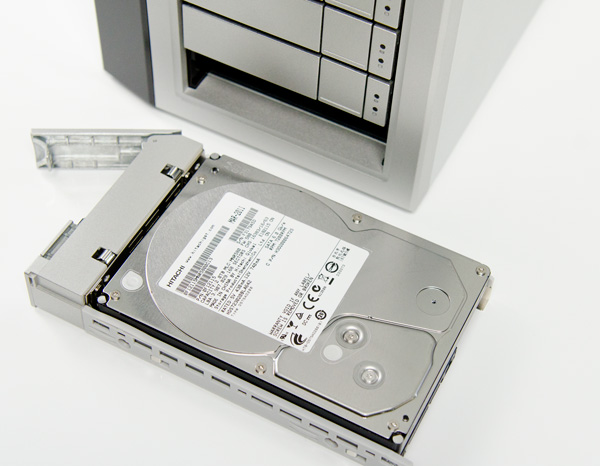
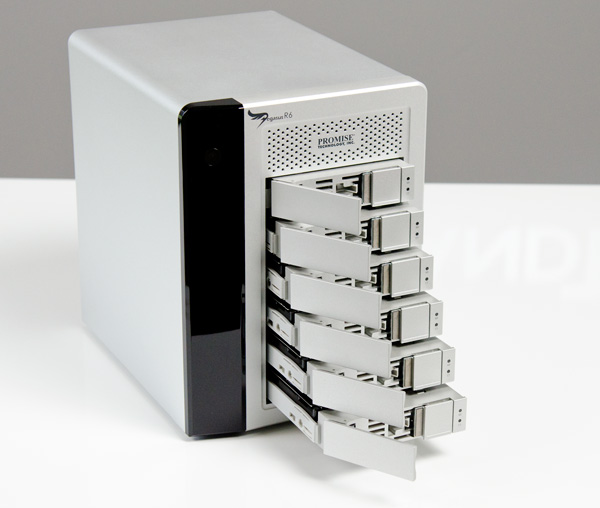
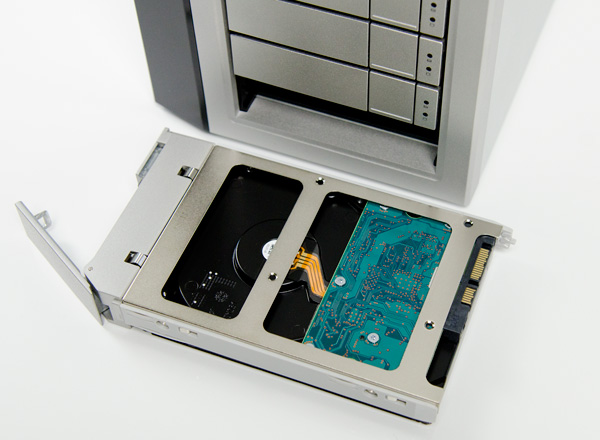
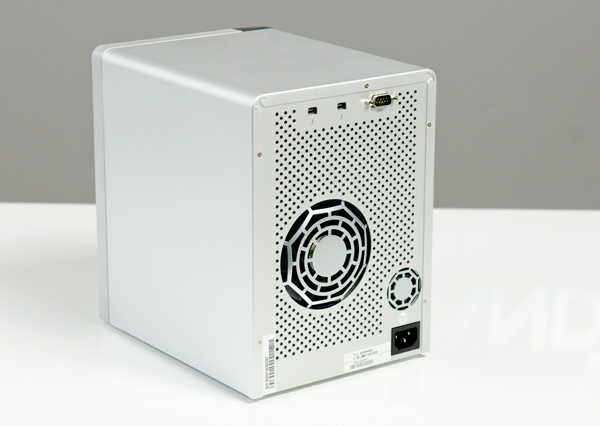














88 Comments
View All Comments
enthios - Thursday, July 28, 2011 - link
"Ironically isolated from the world around them?" How about wifi and iCloud? With limited storage capacity, there's no need for anything more. iOS devices are simply thin clients - and they work wonderfully as such.NirXY - Friday, July 8, 2011 - link
Which is 0$Exelius - Friday, July 8, 2011 - link
Yes, but in this instance, it's not just a dumb wire; there is an IC at each end of the cable. So theoretically, if Intel comes up with an upgraded Light Peak spec, there may well be cables that are capable of faster speeds. I also imagine longer cables become more difficult, and may in fact require fiber optic transceivers built into the cable. This cable also likely costs significantly more to manufacture than a crimped cable, since there's a tiny IC and micro soldering that needs to be done on each cable.But yes, in one sense you are right that in a digital bus, higher quality cables do not provide better performance (though I have run into very low-quality HDMI cables that work fine at 720p but refuse to carry a 1080p signal.)
repoman27 - Sunday, July 10, 2011 - link
At the moment, i’m not sure the Thunderbolt host controller has any real legs on the cable. That host controller is already pumping data to each port at the same speeds as the DMI link between the CPU and PCH. Everything in the chain that is connected to it needs to get faster for Thunderbolt to get faster, i.e. PCIe 3.0, DMI 3.0, DP 1.2.Also, I’m pretty sure it’s not those little ICs that are making Apple’s Thunderbolt cables cost $49. Like many retailers, Apple knows that cables and accessories (and RAM upgrades) are a great place to stretch profit margins. A quick search of the Apple store for cables and adapters will turn up dozens of genuine Apple offerings ranging in price from $19 on up to $99. So, taken in context, the Thunderbolt cable is actually a mid-priced cable from Apple, not an expensive one. It also means that cheap unbranded alternatives could quite realistically be sold for around $15, ICs and all.
Regarding your HDMI cable experience, Category 1 or “Standard” HDMI cables are only rated for 1080i60, whereas Category 2 or “High Speed” cables will do 1080p60, 4K, 3D, Deep Color, etc. Older cables weren’t marked as such, and thus YMMV.
snakeInTheGrass - Friday, July 15, 2011 - link
Yeah, the SCSI cables were $75+ easily, you needed terminators, and do you remember the fine SCSI1/2/3 connector differences so you needed adapters or cables with different ends depending on the devices. I still have probably what WAS $500 of cables in my closed.Inflation adjusted, these $50 cables are about the equivalent of $15 cables back in those days, so frankly they don't sound too bad, especially considering the fact that it's industry leading performance right now.
As for comparing to Monster cables, these Thunderbolt cables have controllers built into them and presumably do have to meet tighter tolerances than USB, particularly as they carry 2 x 10Gbps data streams. But you're right that Monster cables are a rip off.
flowynn - Friday, July 8, 2011 - link
I remember those days well. My need for speed SCSI habit was insanely expensive.MonkeyPaw - Friday, July 8, 2011 - link
It reminds me of FB-DIMMs, an expensive solution that uses additional energy, and the components cost more than devices it replaces. Controllers in the cables AND on the motherboard and peripherals? Maybe the optical solution will make more sense.CrimsonFury - Monday, July 11, 2011 - link
I thought the initial copper cables didn't need any controllers in them? The impression I got from earlier articles was that Intel said their Thunderbolt implementation could scale to optical in future for greater speeds by releasing optical cables with a copper to optical controller in each end of the cable once controller costs had come down from mass production.MobiusStrip - Tuesday, July 12, 2011 - link
No, they need optical in the ports and wires.By reneging on the light in "Light Peak", Intel effectively killed it. Who knows why they're playing dumb in pretending that they're going to get the industry to adopt Thunderbolt and then turn around and adopt an optical solution right afterward. Just idiotic.
André - Friday, July 8, 2011 - link
I find it especially funny considering that all current Thunderbolt solutions (A/V equipment or storage enclosures) are all in excess of $999 to begin with.